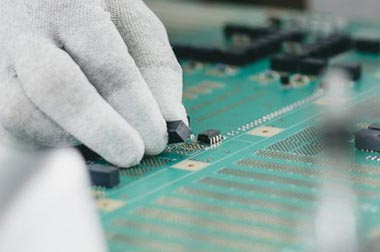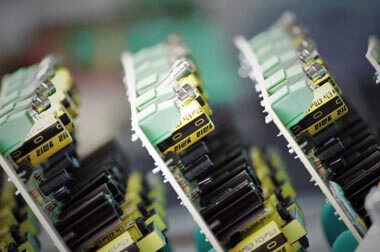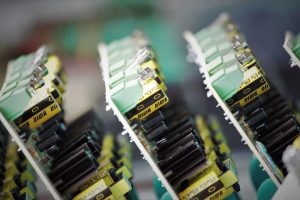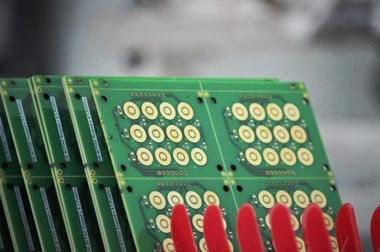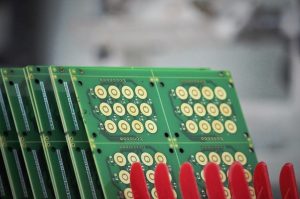Top 10 tips on Choosing the Best PCB assembly manufacturer
Choosing the right PCB assembly manufacturer requires indebt research and knowledge of the market. Doing your homework is important, especially when are so many PCB manufacturer present in the market.
Also, choosing a high-quality PCB Assembly Company ensures that your boards are of the finest quality. These manufacturers would do justice to your product. A good board is bound to generate way better result in comparison to a low-quality board.
Doing indebt research of the market is going to take a lot of time, something many of you might not have. To make your life simple, we have come up with some effective pointers that will help you make the right decision.
In the course of this article, we will talk about Top 10 tips on choosing the best PCB Assembly Manufacturing company.
Table of Content
- Introduction: PCB assembly manufacturer
- Quality Triumphs all
- Time is of Essences
- The company’s Design Capabilities
- Customizability Options
- References are a Must
- Check for Certifications
- Environmental Factors
- Technological Capabilities of a Manufacturer
- Consider Experience
- Customer Support
- Conclusion
Introduction: PCB assembly manufacturer
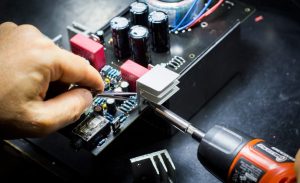
Every project demands a different and unique kind of PCB manufacturer. For instance, if you want a Flexible PCB manufacturer, or an Aluminum PCB manufacturer, you need to choose that particular PCB developer that offers both these types.
If you know what goes into PCB assembly, you would be able to make informative decisions. So, before we proceed, let’s shed some light on What is PCB Assembly?
Read More about: Flexible PCB vs. Rigid PCB
PCB Assembly
To make things simple for you, we say that a PCB assembly is a manufacturing process in which the companies turn a blank board into a functional printed circuit board. They tend to mount the electronic components on the blank board. Once the blank board is loaded with components, it starts working as a circuit board.
Usually, Printed Circuit Board Manufacturer use one of the two processes below:
Through-Hole Manufacturing
- Surface-Mount Technology
- Through Hole Manufacturing
Traditionally, the manufacturer used Through Hole Manufacturing technique in order to create circuit boards. The method involves drilling holes into the board and then placing the units in these holes. The manufacturer also solders the leads to pads on the opposite side of the board.
Through Hole manufacturing offers a strong bond between the circuit board and the components. This is perhaps the main reason, the manufacturer even today use this technique. Clients looking for durability offer reach out to Printed Circuit boards assembled via the Thru-Hole manufacturing process.
Choosing this method means your product will have to undergo a lot of mechanical stress, high voltage, and environmental stress. The thru-hole circuit board technique offers robustness, but at the same time, it is expensive. These circuit boards are perfect for large components including transformers and connectors.
Since you will have to justify the increased price, thus we suggest you analyze your product thoroughly before deciding on this particular technique.
Surface Mount Technology
The second and the more common these days is the Surface Mount Technique. Majority of PCBs today use this particular technique, it is possible to create boards that are way smaller and light-weight in comparison to the through-hole circuit boards.
It is possible to create one-then the weight and one-third the size of a board created using Thru-hole manufacturing. However, these boards might not work well in extreme environments.
In addition, the Surface Mount Technology makes it possible for the create boards with higher connection densities. These boards are not only less expensive, but they are also fast and easy to make. The method involves direct mounting of the components onto the circuit board. This is unlike the traditional methods, where you have to drill a hole first, and then place the components in that hole.
Now that we have an overview of how PCB assembly manufacturer works, let us focus on some important tips that you need to consider in order to choose the best company.
Quality Triumphs all
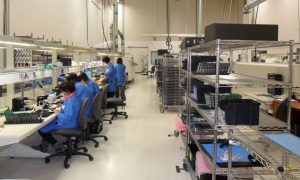
When it comes to circuit boards, quality is perhaps the most important factor. You should, and we repeat, you should always opt for a quality even if you have to pay a little extra. These quality circuit boards might seem expensive at the moment, but they offer long-term advantages.
So, the first thing that you need to consider when choosing a PCB manufacturer is the quality of their manufactured boards. Of course, every company would claim to offer top-notch quality, however, you can’t judge the book by its cover.
In order to know whether a board has high-quality you need to focus on the following factors:
- Size of the Drilled Holes
- Position of the Drilled Holes
- Traces Width and Spacing
- Vias
- Accurate Trace Copper Thickness
A good circuit board will always have tight tolerances on these particular factors. They would have an accurate layer stack-up. These layers are imperative for designs that require impedance controlled traces and similar features.
Time is of Essences
In the business world, time is money and a good PCB assembly manufacturer fully understands this concept. Thus, they will generate results as quickly as possible. They would understand that in order for you to keep your project going, you need to have instant results.
After all, the idea is to maximize the profit by timely delivery of the products to end-consumers and minimize expenses. However, do take notice that if you rush through this particular step can be troublesome. Especially, if the company you are working with does not have the capability to deliver high-quality products under pressure. We can assure you that you will end up with a lot more trouble than what you bargained for.
Therefore, do spend quality time in understanding the company how it works and whether it will be able to generate effective results. The time spent on these things will have you save a lot of time in the future.
Of course, the idea is that a company should not rush into it. However, it does not mean that the company should work at an ant’s speed. If a company is slow to respond to your questions, they are not able to effectively convey information and have bad customer service, it’s a big NO.
Companies that already have a lot on their plate might not be care about your decision to shop elsewhere. So, try to look for small companies that deliver quality products. They will try to assist you in every possible way.
The company’s Design Capabilities
The technological advancement has led to the increased complexity of electronics. Of course, the increase in electronics complexity has a direct impact on the complexity level and design of PCB.
Modern technology requires, faster, reliable and sophisticated Printed Circuit Boards especially in fields that require high-performance devices. Some of these fields include application-specific integrated circuits, microcontrollers, and field-programmable gate array.
Despite the fact that you often discuss these technologies, yet many of you simply choose to overlook the design aspect. However, we do recommend that when you best a PCB assemble manufacturer, ensure that it has the capability to handle requirements for different and sophisticated PCB stack-ups, breakout strategies and vias.
Another important element that you should discuss with the manufacturer is the expectations of signal integrity and power integrity. Both these things will help you get an insight into the manufacturer business.
Customizability Options
A Printed Circuit board manufacturer should be skilled enough to offer various customization options. Ensure that the company you work with has a wide range of customizing features.
They should be able to offer variety in case of solder mask color, filling vias, or even adding serialization. These factors will ensure that the manufacturer can be considered a good option for Aluminum PCB manufacturers, Flexible PCB Manufacturer, etc.
We can’t stress enough on how important it is to use a manufacturer that offers variety. Some companies offer customization options more in comparison to others. For instance, a company might offer 2 colors for smolder mask, however, another company offers about 4-5. We would recommend the second company as it offers more features and functionalities.
References are a Must
If a company is not able to provide references, then consider it a red flag. We would never suggest you to work with a company that does not offer references. Of course, if the company has just started their business, they might not have references.
Working with a new company can be tricky. As you would never know how they work and will, they generate results. On the contrary, a company that has a lot of references to fall back on promises results.
Check for Certifications
If a company that has just started might not be able to provide you with reviews, however, the same company should have certifications. If you like a new company and would like to work with them, we recommend that you check their certification.
In order to earn certifications, companies need to undergo independent reviews by third parties. These third parties are not just any parties, on the contrary, they are qualified parties with tons of experience.
A certified company is a good enough assurance that the company will provide high-quality products. There are different certificates for different aspects of PCB manufacturing. For example, if a company has a validated quality management system, it would also have the ISO9001:2015 certification.
The certification verifies that the company does have a good management system in place. Similarly, you can check certifications for other aspects of the company’s manufacturing processes.
Environmental Factors
Printed Circuit Boards are manufactured throughout the world. Although, there is a generic format that all manufacturers have to follow, yet different countries have different rules and regulations for the electronics and Printed Circuit board manufacturing.
For instance, in some countries, the PCB assembly manufacturer is not allowed to use Lead in Printed Circuit Boards, however, in certain countries, there is no such restriction. So, before deciding on a particular manufacturer, read onto your countries rules and regulations as well.
In case the country has the lead-free rule, you need to opt for a PCB manufacturer that can design and develop lead-free Printed Circuit Boards.
Technological Capabilities of a Manufacturer
Of course, you need to analyze the technological capabilities of the manufacturer. You need to know for sure, whether the desired manufacturer can design and develop a Printed circuit board that matches your requirements.
Ensure that the supplier has the ability to deal with sophisticated Printed Circuit Boards as well. For instance, they should be able to develop composite boards with 24 layers of above. Usually, companies with state of the art equipment are able to create effective composite boards having multiple layers.
Likewise, the company should be able to handle situations where they have to create extremely small boards, with clearance constraints and very thin traces. They should also be able to handle high copper thickness and similar factors.
Every PCB assembly company is not able to handle these kinds of situations, you need to look elsewhere to shop.
Consider Experience
Practice makes a man perfect! The same rule applies in the business world. A company that has been designing and developing Printed Circuit Boards for years will be able to generate better results in comparison to the company that has just started.
So, when you go window shopping for a PCB manufacturing company, we suggest you look for the following information:
- How long have they been into business?
- What services do they offer?
- The Type of Industries they have worked with in the past
- What size batch are they able to handle well?
- What type of technique do they use for component mounting?
- The type of products they have assembled in the past.
Look for companies whose experience matches your requirements. For instance, if you want aluminum PCB, look for companies that have more experience in Aluminum PCB manufacturing.
When you search you will find, Aluminum PCB manufacturer, Flexible PCB manufacture or PCB manufacturer offering all types of PCB manufacturing. In this situation, we would recommend a company that excels in what you are looking for.
Customer Support
A company’s way to show that they care is to have outstanding and responsive customer support. When a consumer has a problem, he needs to reach out to the company and if the firm does not have customer support, it means there is no one to resolve the issue.
This is something you would not want, especially when you are in the business of sophisticated technology. You need to work with companies that offer an outstanding and round the clock customer services.
In addition, to have responsible and responsive customer service, their customer representatives should be knowledgeable. They should be able to effectively resolve the consumers' issue, take immediate steps to reduce tension and satisfy the consumer in every possible way.
Conclusion
Choosing the right PCB assembly manufacturer is extremely important as the feature of your product depends upon it. You need to ensure that the manufacturer offers quality and customization ability.
The Printed Circuit Board assembly company should use state of the art technology in order to create advanced and sophisticated PCBs. Make sure that the company either has years of experience of certification. In addition, the company needs to have outstanding customer services.
We did not find any company other than KINGPCB, that fit all the above requirements. The manufacturer ensures to deliver high-quality products. They use sophisticated techniques and equipment to design and develop any kind of PCBs. In addition, they have excellent customer services and years of experience. You can contact them at any time and they will respond as quickly as possible.
So, if you are searching for a PCB manufacturer, we suggest that you reach out to KingPCB. They will provide you with all the information you want efficiently and effectively.


